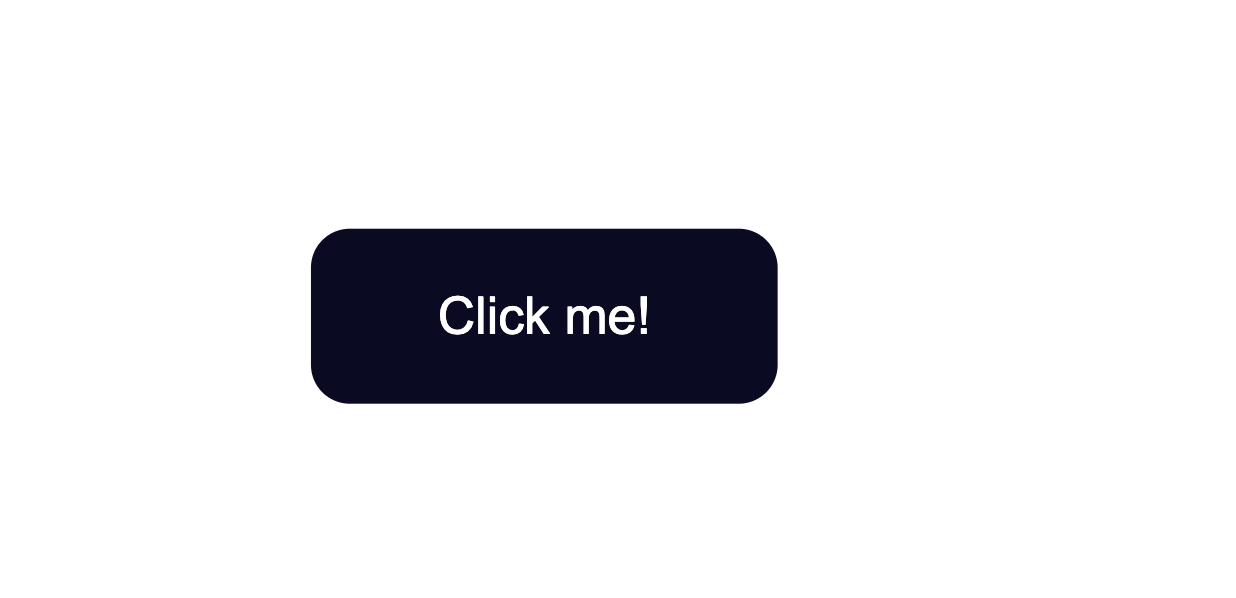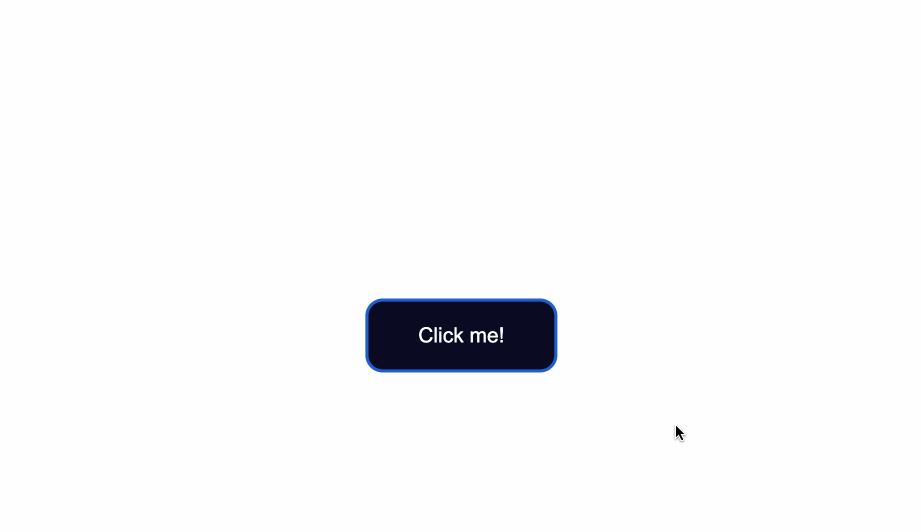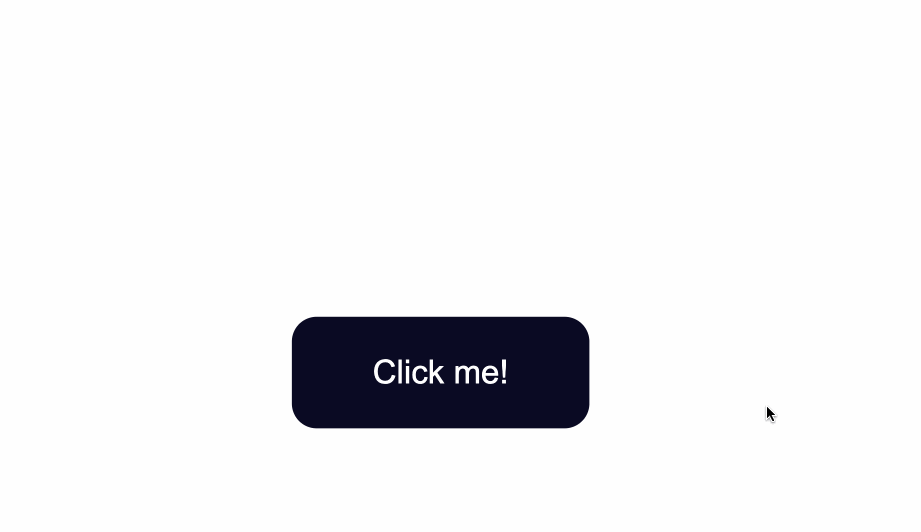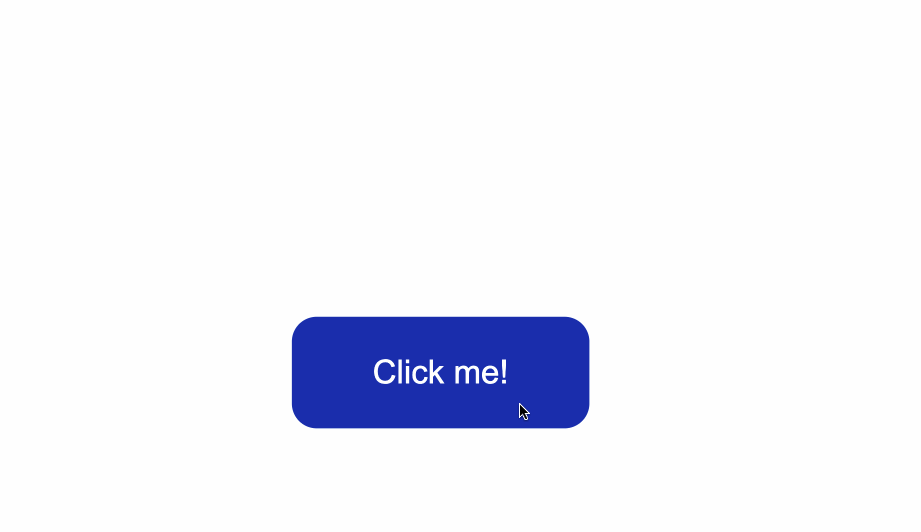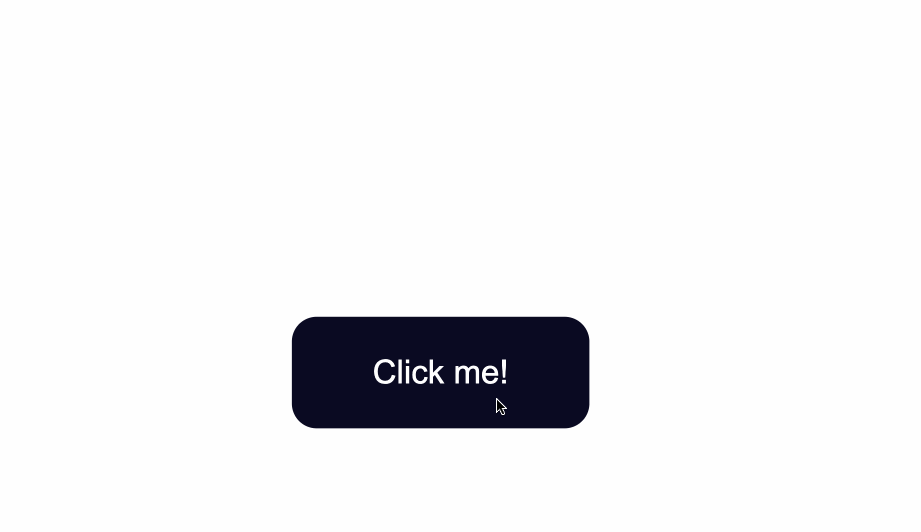7 KiB
button
break down of html
Let's break down the html
<body>
<button type="button" class="button">Click me!</button>
</body>
You first add the button element, which consists of an opening and closing tag
<button> and closing </button>
- The type="button" attribute in the opening button tag explicitly creates a clickable button. Since this particular button is not used for submitting a form, it is useful for semantic reasons to add it in order to make the code clearer and not trigger any unwanted actions.
- The class="button" attribute will be used to style the button in a separate CSS file. The value button could be any other name you choose. For example you could have used class="btn".
- The text Click me! is the visible text inside the button.
styling button
* {
box-sizing: border-box;
}
body {
display:flex;
justify-content: center;
align-items: center;
margin:50px auto;
}
.button {
position: absolute;
top:50%
}
The default styling of buttons will vary depending on the browser The code from above will result in the following: !button 1.png
How to Change the Default Styling of Buttons
for each option add to class or id
for background color
background-color:#0a0a23;
for text color
color: #fff;
Change the Border Style of Buttons
border color
border-color: #fff;
having border or not
border: none;
round-up the edges of the button
border-radius:10px;
slight dark shadow effect around the button
box-shadow: 0px 0px 2px 2px rgb(0,0,0);
Change the Size of Buttons
unsorted
The way to create more space inside the button's borders is to increase the padding of the button.
Below I added a value of 15px for the top, bottom, right, and left padding of the button.
I also set a minimum height and width, with the min-height and min-width properties respectively. Buttons need to be large enough for all different kind of devices.
.button {
position: absolute;
top:50%;
background-color:#0a0a23;
color: #fff;
border:none;
border-radius:10px;
padding:15px;
min-height:30px;
min-width: 120px;
}
How to Style Button States
Buttons have three different states:
:hover:focus:active
It's best that the three states are styled differently and don't share the same styles.
In the following sections I'll give a brief explanation on what each one of the states mean and what triggers them. You'll also see some ways you can style the button for each separate state.
How to Style :hover States
The :hover state becomes present when a user hovers over a button, by bringing their mouse or trackpad over it, without selecting it or clicking on it.
To change the button's styles when you hover over it, use the :hover CSS
pseudoclass selector.
A common change to make with :hover is switching the background-color of the button.
To make the change less sudden, pair :hover with the transition property.
The transition property will help make the transition from no state to a :hover state much smoother.
The change of background color will happen a bit slower than it would without the transition property. This will also help make the end result less jarring for the user.
.button:hover {
background-color:#002ead;
transition: 0.7s;
}
In the example above, I used a Hex color code value to make the background color a lighter shade for when I hover over the button.
With the help of the transition property I also caused a delay of 0.7s when the transition from no state to a :hover state happens. This caused a slower transition from the original #0a0a23 background color to the #002ead background color.
Keep in mind that the :hover pseudoclass does not work for mobile device screens and mobile apps. Choose to use hover effects only for desktop web applications and not touch screens.
How to Style :focus States
The :focus state takes effect for keyboard users - specifically it will activate when you focus on a button by hitting the Tab key (⇥).
If you're following along, when you focus on the button after pressing the Tab key, you'll see the following:
Notice the slight light blue outline around the button when it's gained focus?
Browsers have default styling for the :focus pseudoclass, for accessibility keyboard navigation purposes. It's not a good idea to remove that outline altogether.
You can however create custom styles for it and make it easily detectable.
A way to do so is by setting the outline color to first be transparent.
Following that, you can maintain the outline-style to solid. Lastly, using the box-shadow property, you can add a color of your liking for when the element is focused on:
.button:focus {
outline-color: transparent;
outline-style:solid;
box-shadow: 0 0 0 4px #5a01a7;
}
You can also again pair these styles with the transition property, depending on the effect you want to achieve:
.button:focus {
outline-color: transparent;
outline-style:solid;
box-shadow: 0 0 0 4px #5a01a7;
transition: 0.7s;
}
How to Style for the :active State
The :active state gets activated when you click on the button by either clicking the computer's mouse or pressing down on the laptop's trackpad.
That being said, look at what happens when I click the button after I've applied and kept the styles for the :hover and :focus states:
The :hover state styles are applied before clicking when I hover over the button.
The :focus state styles are applied also, because when a button is clicked it also gains a :focus state alongside an :active one.
However, keep in mind that they are not the same thing.
:focus state is when an element is being focused on and :active is when a user clicks on an element by holding and pressing down on it.
To change the style for when a user clicks a button, apply styles to the :active CSS pseudoselector.
In this case, I've changed the background color of the button when a user clicks on it
.button:active {
background-color: #ffbf00;
}
